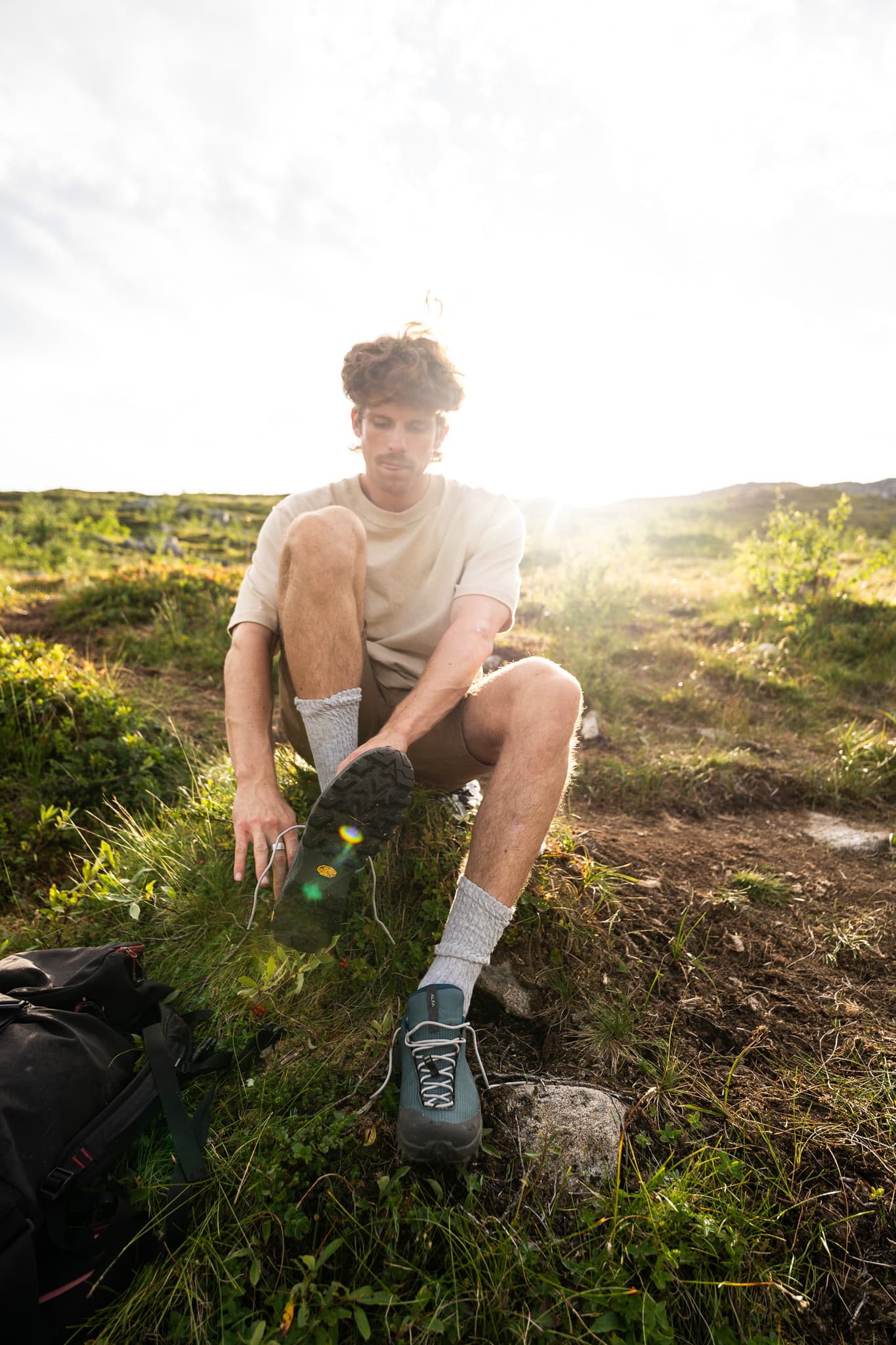Laggo Leather
Leather hiking shoe
169 GBP

ALFA has hiking shoes in two heights (low and medium), as well as hiking boots and hunting boots that are even higher in the shaft. Many people want one hiking shoe for all types of use, but our recommendation is that if you are an avid hiker who goes on different types of hikes, your shoe closet should contain at least two pairs adapted to different uses.

Ankle support
A low-cut hiking shoe has no ankle support, and we recommend using them on trails where the surface is mostly smooth. Shoes without ankle support demand a greater degree of ankle stability and strength, especially if you find yourself on a challenging section of a trail.
Terrain and packing
They work best for walks without a backpack, or with a lightweight one. For walks on smooth trails and in areas where the ground is relatively clear of vegetation, these shoes are excellent.
Waterproofness
Low-cut shoes are often less water-resistant, for example from heather or long grass. This is because water can enter over the collar and run down into the shoes, despite the shoes having a GORE-TEX membrane to protect your foot from shallow puddles and wet conditions.


Ankle support
Moderate ankle support will help on tricky sections of trails, but be careful as the trail gets more demanding. A mid-cut shoe supports the ankle but will still have to be carefull when used with a heavier rucksack and in steep terrain.
Terrain and packing
These work well with a light back-pack and on day trips with regular trail surface.
Waterproofness
Water won’t seep in through the boot itself due to the GORE-TEX membrane, but as per low-cut shoes, will over time creep in over the collar. But with a mid-height shoe it will take longer and you can use shell pants to block any water from coming in.
Low hiking boots have a ring ankle support. The shoes should therefore be used on open paths and roads where the terrain is not demanding. You should go without a backpack, or wear a very light backpack on your back.
A hiking boot should have a roomy and good fit and sit comfortably on the foot. Always consider the terrain you will be walking in and how much weight you will be carrying when choosing hiking boots. Heavy luggage and demanding terrain place higher demands on ankle support than lighter hikes on trails and roads.
A hiking boot should fit comfortably on your foot and have good grip. The height of the shaft gives your foot stability, and the stability you need depends on your use and the load you will be carrying. A medium-high shaft is recommended if you will be using a light pack. More demanding terrain and packing requires a higher shaft.
Low cut hiking shoes
Mid-height hiking shoes